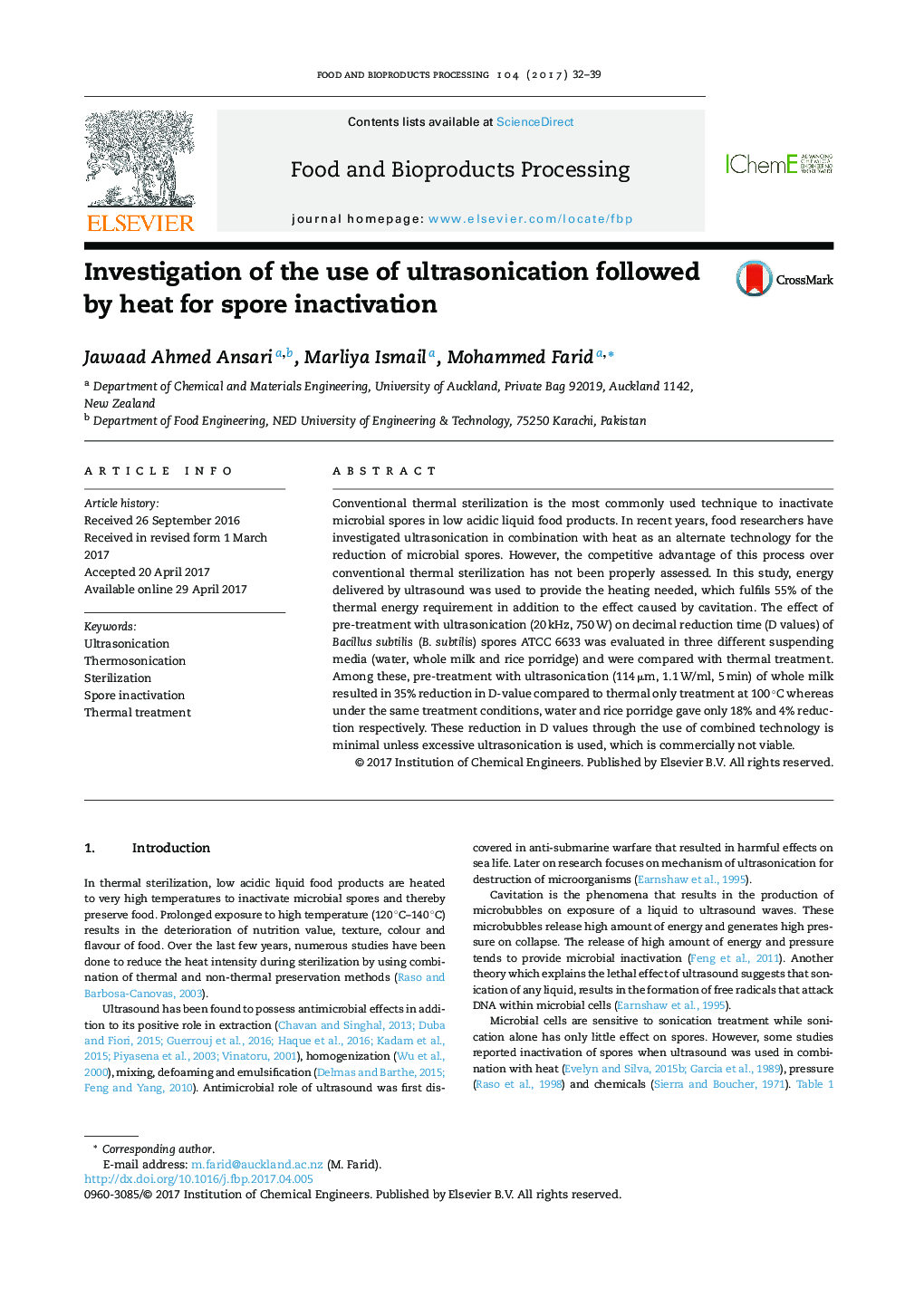| Article ID | Journal | Published Year | Pages | File Type |
|---|---|---|---|---|
| 4752930 | Food and Bioproducts Processing | 2017 | 8 Pages |
â¢A new perspective to apply ultrasonication in spore inactivation is proposed.â¢Ultrasonication in combination with heat is needed for spore inactivation.â¢Spore inactivation with ultrasonication with heat is comparable to thermal treatment.
Conventional thermal sterilization is the most commonly used technique to inactivate microbial spores in low acidic liquid food products. In recent years, food researchers have investigated ultrasonication in combination with heat as an alternate technology for the reduction of microbial spores. However, the competitive advantage of this process over conventional thermal sterilization has not been properly assessed. In this study, energy delivered by ultrasound was used to provide the heating needed, which fulfils 55% of the thermal energy requirement in addition to the effect caused by cavitation. The effect of pre-treatment with ultrasonication (20 kHz, 750 W) on decimal reduction time (D values) of Bacillus subtilis â(B. subtilis) spores ATCC 6633 was evaluated in three different suspending media (water, whole milk and rice porridge) and were compared with thermal treatment. Among these, pre-treatment with ultrasonication (114 μm, 1.1 W/ml, 5 min) of whole milk resulted in 35% reduction in D-value compared to thermal only treatment at 100 °C whereas under the same treatment conditions, water and rice porridge gave only 18% and 4% reduction respectively. These reduction in D values through the use of combined technology is minimal unless excessive ultrasonication is used, which is commercially not viable.
Graphical abstractDownload high-res image (106KB)Download full-size image
